The Little Kona Crossover is the Future Face of Hyundai's SUVs

Hyundai has teased its entry into the subcompact crossover segment in the past but only acknowledged that it would have at least one thin LED headlamp, be called the Kona, and finally serve round out the company’s SUV lineup. On Friday, the company released another teaser to give us a better sense of what the little crossover will actually look like.
For starters, the thin LED strips are now running lamps positioned above the vehicle’s actual headlights, à la Nissan Juke. However, Hyundai appears to have accomplished it in a much more understated manner than Nissan. Unlike the Juke, the Kona has its light strips running just below the hood opening and very near the actual illumination sources. It’s a lot less funky, but should be interesting enough to set it apart from the rest of the segment — an important consideration, as there’s much more stylistic variation between subcompact crossovers than between their compact equivalents.
“The new twin headlamp enhances the visual impact, with the LED daytime running lights positioned on top of the LED headlights,” Hyundai said in its release. “The separated lights at the front deliver a confident, progressive appearance with sleek and sharp shapes.”
If spy shots of thinly disguised test vehicles are anything to go by, the rest of the Kona won’t be quite as bold as its face — not that you’d expect it to be. The front end is just a byproduct of the brand’s evolved styling, not a anomalous statement like the Juke. Hyundai says it wants to deliver a practical daily driver with above average visibility, superior comfort and agile handling.
The company didn’t include any hardware specifics but, since we know the Kona will use the same platform as the Creta, it will likely use the four cylinder Gamma engines. It’s probable the crossover won’t see anything more raucous than the 1.6-liter forced-induction four-cylinder found in the Kia Soul Turbo, but expect tamer options as standard equipment. Front-wheel drive will be the default setup, and the company has stated that all-wheel drive will be available at extra cost.
Hyundai’s Kona will enter the Korean domestic market in the summer of 2017 and the U.S. market in early 2018.
[Image: Hyundai]

A staunch consumer advocate tracking industry trends and regulation. Before joining TTAC, Matt spent a decade working for marketing and research firms based in NYC. Clients included several of the world’s largest automakers, global tire brands, and aftermarket part suppliers. Dissatisfied with the corporate world and resentful of having to wear suits everyday, he pivoted to writing about cars. Since then, that man has become an ardent supporter of the right-to-repair movement, been interviewed on the auto industry by national radio broadcasts, driven more rental cars than anyone ever should, participated in amateur rallying events, and received the requisite minimum training as sanctioned by the SCCA. Handy with a wrench, Matt grew up surrounded by Detroit auto workers and managed to get a pizza delivery job before he was legally eligible. He later found himself driving box trucks through Manhattan, guaranteeing future sympathy for actual truckers. He continues to conduct research pertaining to the automotive sector as an independent contractor and has since moved back to his native Michigan, closer to where the cars are born. A contrarian, Matt claims to prefer understeer — stating that front and all-wheel drive vehicles cater best to his driving style.
More by Matt Posky
Latest Car Reviews
Read moreLatest Product Reviews
Read moreRecent Comments
- ToolGuy First picture: I realize that opinions vary on the height of modern trucks, but that entry door on the building is 80 inches tall and hits just below the headlights. Does anyone really believe this is reasonable?Second picture: I do not believe that is a good parking spot to be able to access the bed storage. More specifically, how do you plan to unload topsoil with the truck parked like that? Maybe you kids are taller than me.
- ToolGuy The other day I attempted to check the engine oil in one of my old embarrassing vehicles and I guess the red shop towel I used wasn't genuine Snap-on (lots of counterfeits floating around) plus my driveway isn't completely level and long story short, the engine seized 3 minutes later.No more used cars for me, and nothing but dealer service from here on in (the journalists were right).
- Doughboy Wow, Merc knocks it out of the park with their naming convention… again. /s
- Doughboy I’ve seen car bras before, but never car beards. ZZ Top would be proud.
- Bkojote Allright, actual person who knows trucks here, the article gets it a bit wrong.First off, the Maverick is not at all comparable to a Tacoma just because they're both Hybrids. Or lemme be blunt, the butch-est non-hybrid Maverick Tremor is suitable for 2/10 difficulty trails, a Trailhunter is for about 5/10 or maybe 6/10, just about the upper end of any stock vehicle you're buying from the factory. Aside from a Sasquatch Bronco or Rubicon Jeep Wrangler you're looking at something you're towing back if you want more capability (or perhaps something you /wish/ you were towing back.)Now, where the real world difference should play out is on the trail, where a lot of low speed crawling usually saps efficiency, especially when loaded to the gills. Real world MPG from a 4Runner is about 12-13mpg, So if this loaded-with-overlander-catalog Trailhunter is still pulling in the 20's - or even 18-19, that's a massive improvement.



















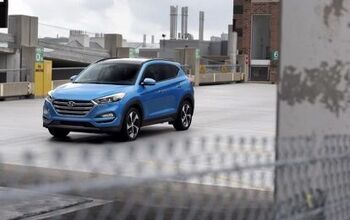
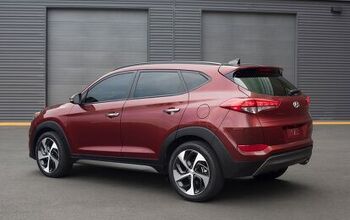
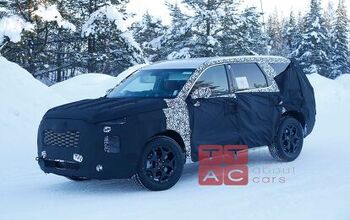
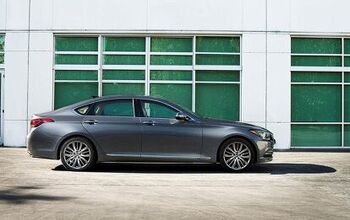







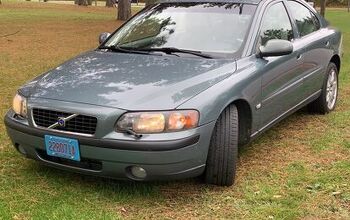



Comments
Join the conversation
This will look fine on a little chunky subcompact CUV, but as for being the face of their lineup, I'm not sold.
Why does every OEM hate the most innocuous things? First it was visibility, gone. Then normal sized wheels, gone. Then buttons, gone. Now headlamps too?